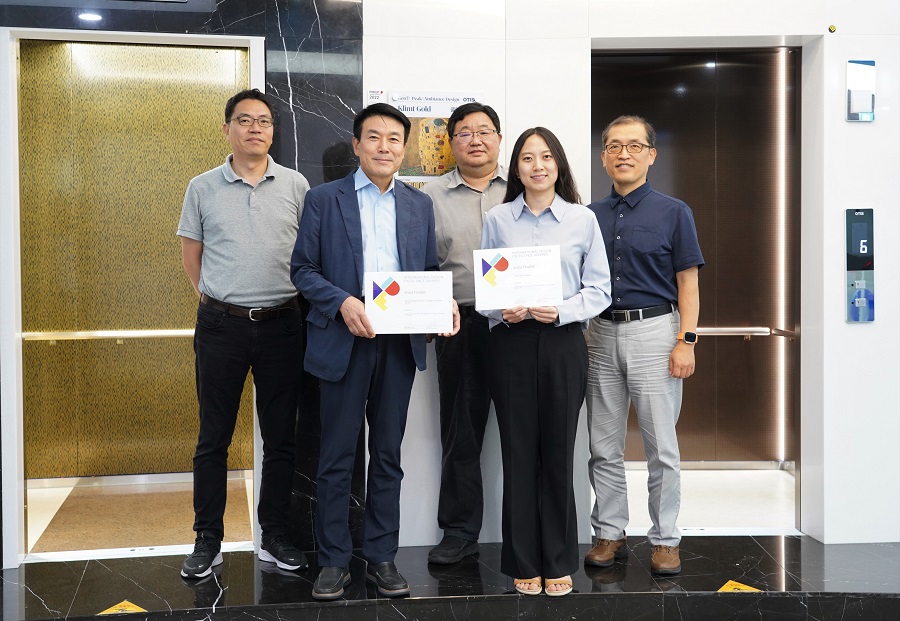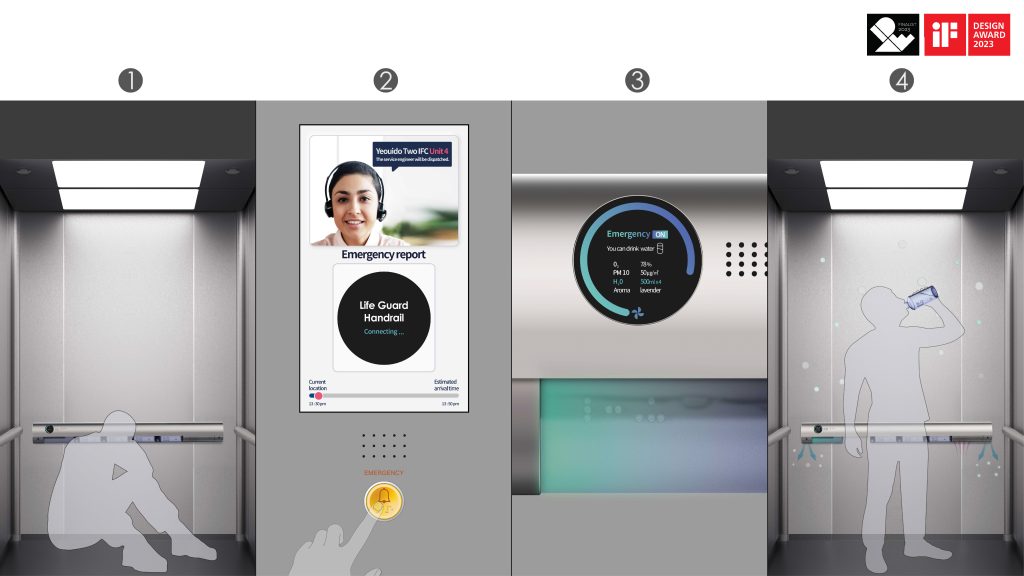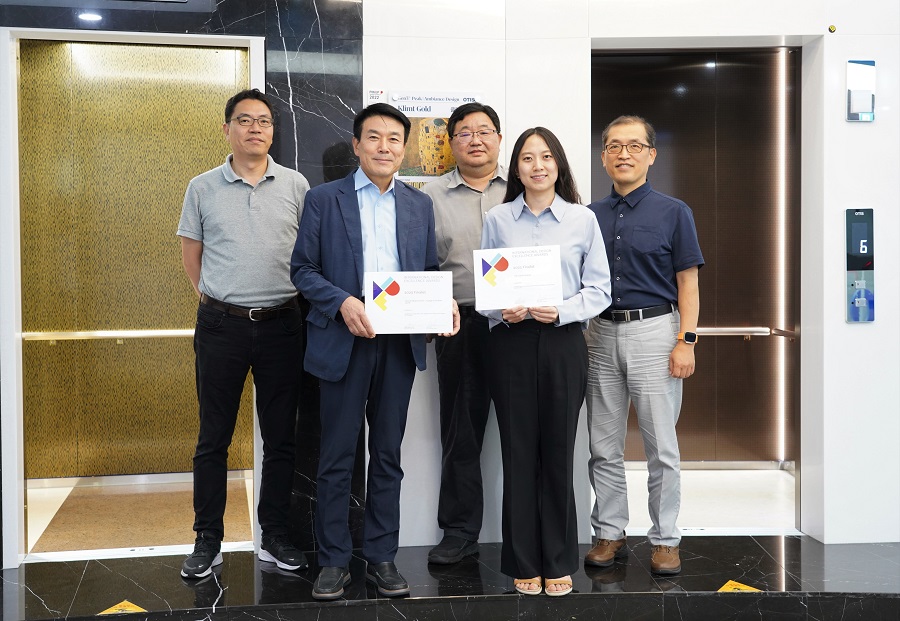Otis’ Ambiance Series and Lifeguard Handrail
In this Industry Dialogue, Ji-Hyeon “Gilbert” Jeong (GJ), leader of the Otis Korea Design Center, speaks with your author (KW) about the development of two unique product concepts: the Ambiance line and the Lifeguard Handrail. Available with an array of fixtures dependent on the customer’s budget and taste, the Otis Gen3TM Ambiance Series draws inspiration from Eastern and Western cultures, while the Lifeguard Handrail (a concept not yet in production) integrates potentially life-saving components into the humble handrail. Both designs were recently recognized as 2023 International Design Excellence Award (IDEA) finalists organized by the International Designers Society of America.
KW: What is the availability of each product?
GJ: The Gen3 elevator is a next-generation, digitally connected elevator that was launched in South Korea in March of this year (ELEVATOR WORLD, May 2023), and is currently being sold on the market. Customers may choose the elevator design from various options, including the Ambiance Series, according to their preference, characteristics of the space, etc. The Lifeguard Handrail is part of an advanced design for the future development of innovative products and, as such, is not yet in production.
KW: Where would both offerings be manufactured?
GJ: The Gen3 Ambiance Series is currently being manufactured in our Korean factory. It seems that the Lifeguard Handrail, if and when it is officially launched, would also be manufactured there.
KW: Tell me about the inspiration for the Ambiance designs that represent cultures from the East and West. What roles do shapes, images, colors and lighting play?

Gilbert Jeong, second from left, with the design team at the IDEA awards ceremony in NYC; photo courtesy of Otis
GJ: We are living in a “smart building ecosystem,” in which connectedness is being strengthened further and further. Accordingly, the interest in mobility is also evolving.
The Ambiance Series is a design that was conceived by focusing on such connectedness. With “voyage to another world” as its theme, it was inspired by — and reinterprets — the representative nature, architecture and artistic works of Eastern and Western cultures. Colors and patterns reminiscent of each culture have been applied to the interior of the car and, by installing corner-edge lighting, we sought to provide a sense of space that is both soft and luxurious.
Detailed explanations are as follows:
East Asian culture (Oriental Black): We expressed an ambiance of meditating in a silent, black bamboo forest and embodied the node of the bamboo in a pattern so passengers can feel the effect of light and shade in oriental paintings.
Latin American culture (Mystic Bronze): We expressed the mysterious ambiance of an ancient civilization that worshipped a sun god and designed the elements by bringing together the whirlwind pattern in the style of Chenes — the Mayan style of architecture — and the color bronze in harmony.
Arctic culture (Ocean Blue): We sought to enable passengers to feel the cool ambiance of the Arctic Ocean, in which glacial fragments are floating around and embody blue ice fragments in a pattern.
European culture (Klimt Gold): By applying the gold leaf mosaic pattern in The Kiss by Gustav Klimt, the representative artist of Austria, we sought to enable passengers to experience a space that is both golden and artistic.
KW: Tell me about the fixtures for the Ambiance Series.

Features of the Lifeguard Handrail are described; image courtesy of Otis.
GJ: Car operating panels are illuminated with LED lighting and have standby mode. In addition, customers have a wide array of choices when it comes to handrails, control panels and kick plates in standard, advanced and premium finishes. For handrails, these include brushed chrome (standard, advanced and premium), mirror chrome (advanced and premium) and brushed dark grey and mirror dark grey (premium). Control panels are available in brushed stainless steel (standard, advanced and premium); and mirror stainless steel, brushed dark grey and mirror dark grey (premium). Kick plates, which are optional in standard models, are available in brushed chrome (standard, advanced and premium), mirror chrome (advanced and premium) and mirror chrome and brushed dark grey (premium).
KW: Tell me about the origin of the idea for the Lifeguard Handrail. Was it prompted by a particular disaster or need?
GJ: With the expansion of urbanization across the world, there are more buildings and more elevators. When someone is in a stopped car, they tend to panic and can experience dehydration or lack of oxygen, or feel a sense of fear. The Lifeguard Handrail started from the thought, “How can we offer practical assistance in a situation like this?” Ahead of the design, we put together, reviewed and analyzed articles from various media sources, academic papers, opinions of emergency rescue experts, etc. The conclusion was that, for passengers who are in a stopped elevator cab, things such as emergency water and oxygen supply are essential. Accordingly, we put our focus on safety as one of the absolute values at Otis and devised the design solution that is the Lifeguard Handrail.
KW: What has the response been to both designs? Do you think a particular geographical market would be more likely to embrace them?
GJ: The Gen3 elevator was launched in South Korea earlier this year with the title “next-generation, digitally connected elevator,” and news of the launch of Gen3 attracted the spotlight through various domestic media channels within South Korea. The Ambiance Series, with its designs in which artistic works, architectural works, natural scenery and more from various cultures have been adopted as a story, has been met in the domestic market with the reaction that it is both interesting and familiar. In particular, it seems that “Klimt Gold,” a design involving the embodiment of a pattern in Gustav Klimt’s work (which is well known to the public) in the wall panel is generating a lot of interest. The Lifeguard Handrail is a concept product, but we believe it is a necessary product, regardless of geographical market.
KW: What is the target market for a potential customer? (office, multifamily residential, retail)
GJ: The Gen3 Ambiance Series can be applied in all buildings, including apartments, shopping centers and multifamily housing. But, in particular, we expect that it would offer an even more unique experience to passengers when installed in a building that has a luxurious ambiance. If the Lifeguard Handrail goes into production, its main target will be multistory and multipurpose buildings. This is because passengers’ anxiety increases even more when they are stalled on higher floors. The Lifeguard Handrail provides not only oxygen, water and air with a pleasant aroma, but also a rescue service by an operator through the Otis eViewTM display, thereby offering peace of mind and body to the passengers. We would suggest viewing it as a potential safety solution in Otis’ future that shows consideration for passengers.
Get more of Elevator World. Sign up for our free e-newsletter.









